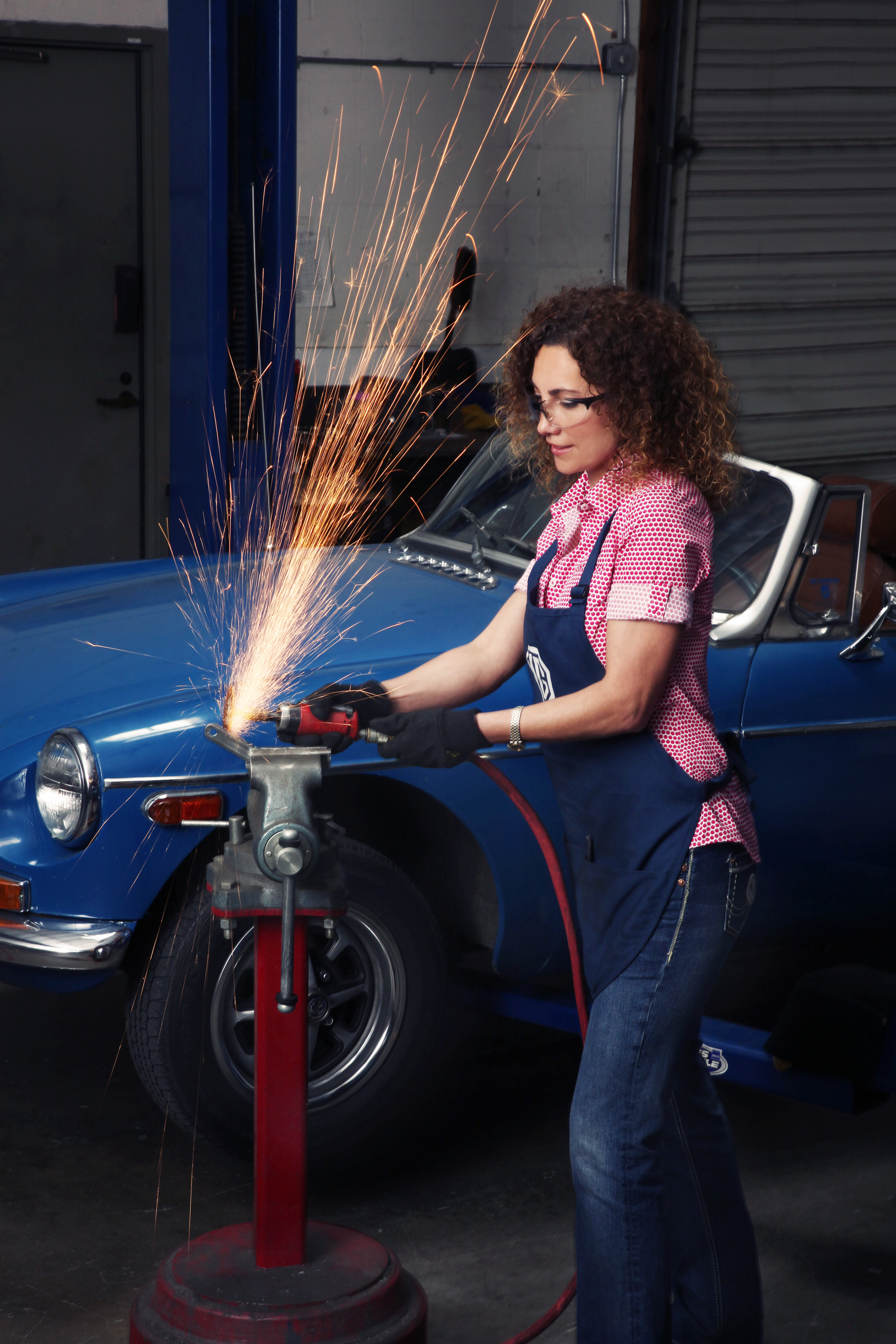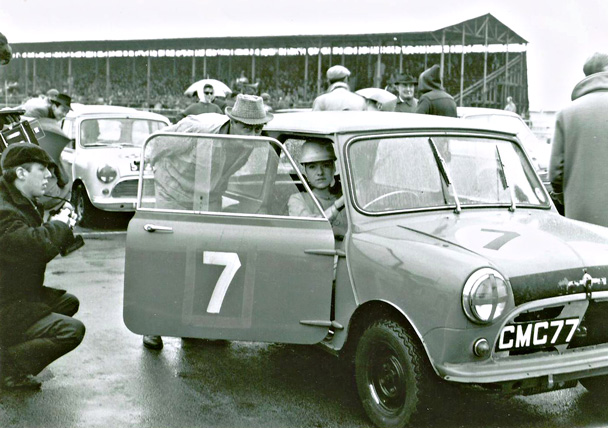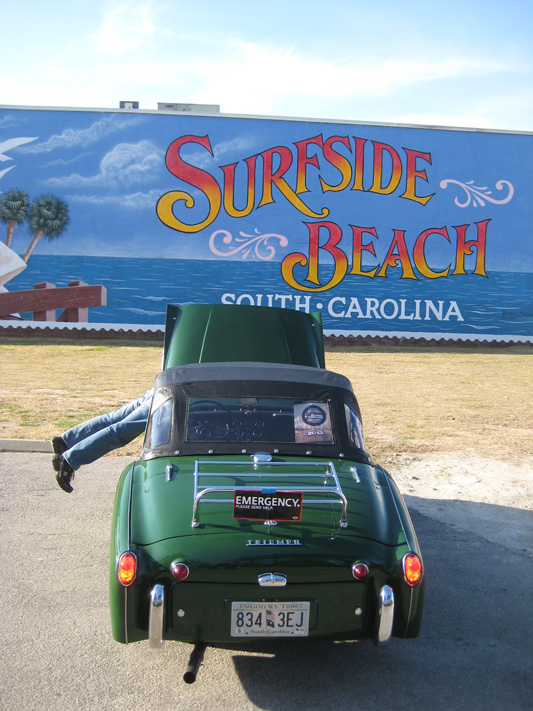Choosing a Hobby Level Air Compressor
Perhaps no other tool has empowered the automotive hobbyist more than the air compressor. Armed with a properly sized compressor and the right air tools, there are very few jobs that can’t be tackled.
Want to inflate tires and blow out carburetors? What about powering air guns and ratchets? Plan on cutting or grinding bad body panels with air tools? How about sanding and painting? While each of these processes usually requires the same amount of working pressure (90 psi), the air tools in question all require a different volume of air to work effectively. You’ll need to properly size the compressor for the tools as well as for the amount of time they will be used.
The air produced by a compressor and the amount of air required to run a specific air tool is measured in CFM (cubic feet per minute). For simplicity we’ll just be looking at what you can expect from compressor size “A” powering tool type “B” and any limitation that may arise.
For the average home user there are two basic types of compressors: oiled units that use a pump with a crankcase filled with oil, and the other is an “oil-less” type.
Oil-less compressors are insanely noisy and not as durable as their oiled counterparts. An oil-less unit isn’t something you want running in your basements or attached garage early in the morning. I recommend you don’t buy one. If you do, the good thing is they don’t last forever.
Oil-less units run about half the cost of a comparable oiled unit and they only last maybe 10-20% as long as an oiled unit depending on use. I started out on an oiled compressor built by my grandfather using an old Briggs & Stratton 3-hp and a used Chrysler RV-2 automotive air conditioning compressor. While it was crude and a bit dangerous, it outlasted him, my father and myself. It was later stolen and is no doubt still serving someone today—50 years later. While a good oiled unit will last longer than you really need, it also won’t give you any problems while you own it. With this in mind we’ll mainly look at oiled machines in the $450 to $650 range. These should cover most needs of a hobby-level user. I’m a firm believer that a 220v/60 gallon 10 CFM oiled unit is the minimal compressor a serious hobbyist should consider, and preferably a cast iron unit at that. I’ll explain why.
Prepare for the long run
Oiled compressors basically come in two types of pumps: cast iron and aluminum. I prefer cast iron pumps for their wear resistance. I only like to buy things once, and a good ferrous cylinder unit is only a few dollars more if there is any difference in price at all.
There are two common voltages and tank sizes available for home compressors: 110/220v and 30/60 gallon, respectively. The largest 110v models usually top out at around 30 gallons and about 5.5 CFM. Some 110v units can run air ratchets and impact guns pretty well but the lower output units most likely won’t. Most wrench-type tools require between 4-6 CFM and a proper compressor will have to supply enough air for them to run effectively for the duration of the task. Some folks may get by with smaller units but there may be some extra time spent waiting for the compressor to catch back up. Forget about continuous grinding or sanding/blasting with a small compressor (30 gallons, 5.5 CFM or less) as it won’t be able to keep up with high demand tools for very long.
Don’t pay too much attention to horsepower as the same compressor that was rated 7hp ten years ago is now rated at 3-3.5hp today. What really matters is CFM at the required pressure and tank size.
Most good 30 gallon units put out anywhere from 4.5-6 CFM and maybe a bit higher. These units will run ratchets and impact guns well for most practical single-user applications. Using these compressors for sanding, grinding and blasting is a bit of a stretch. If mobility is important or storage space is limited, a 30-gallon unit may work well for your needs.
Proper work load, proper care
When I purchased my current “7hp”/60-gallon unit, the 30-gallon model was the same price. Space, funds and spouse allowing, I feel it’s better to have and not need, than to need and not have.
If you are undergoing a full restoration and/or have paint or prep work in your future, I strongly recommend a 220v unit of at least 10 CFM and 60 gallons capacity at a minimum. My 60 gallon unit is rated 10.3 CFM @ 90 psi. It will outrun any of my wrench style tools all day long. However, if grinding, cutting, sanding or blasting is required, those tools will demand more than my compressor can continuously supply. I can’t use them non-stop but that really isn’t a big deal. When the pressure drops too low for the tool to work properly, it’s about time for me to take a break anyway. This is especially true with a media blasting cabinet, which can become tiresome.
Whichever compressor you get make sure you change the oil in it regularly with the recommended type. I like to break-in new compressors by running them for 20-30 minutes continuously and then change the oil. It’s a good idea to keep an eye on the condition of the oil and change it when it gets a metallic tinge. This will get you in the habit of checking and changing your compressor oil. Don’t forget to add a good water separator, oil your air tools and drain your tank frequently too. Air tools don’t react well with water, especially un-lubed or during a paint job. Taking care of your compressor like you would your car will ensure it will be around longer than you will. After becoming accustomed to having a high quality compressor around you’ll never be able to live without it.
By Billy Hammell









'Achieving Air Superiority' have 7 comments
July 26, 2013 @ 9:57 am Larry
Very nice article, and I’m certainly an agreement with everything you say. However, after using air tools for years, and putting up with schlepping hoses, spraying oil, noise, etc., I’ve concluded that electric power tools might be a better choice. I found a 3/8 inch lithium- battery impact wrench, for example, to be indispensable for the disassembly of a rusty MGA. For big jobs, I use a 1/2 inch electric impact wrench that I bought at a garage sale for $5. I have used a cheap Chinese-made 3 inch cut off saw and a 4 1/2 inch grinder for many years, and at the price I really don’t care if they don’t last forever.
A good compressor is, of course, indispensable for blowing off parts, painting, blasting, etc. Nevertheless, I vote for electric tools.
September 3, 2013 @ 10:41 am Brent
Air Tools! Quality air tools and a well set up air distribution has always been my preference. Of course we are talking about sports cars and not equipment with 3 inch lug nuts. As Larry said, the new electric tools that are now available are quite impressive. I still prefer air, but I’m just ol’school.
October 1, 2013 @ 5:03 am Hap Waldrop
Shelly looks so nice with her safety glasses, shop apron, and a die grinder. Shelly can you come train my wife to be handy in the shop as well? 🙂 Keep up the good work guys, and gals!
Hap Waldrop
August 8, 2014 @ 7:52 am Tom Moors
I have been a professional auto mechanic for longer than I would care to admit. Air is the way to go! Air tools are much more compact and have a much better power to weight ratio. That being said if you can find a cordless electric tool that will do the job, they can be very useful too. The reason I chose to comment on this photo though is that my first reaction to it was that I think I would move that “B” before showering it with hot sparks…………
April 23, 2020 @ 5:23 am Jos
I never understand why Japanese and Chinese and Taiwanese and Korean items are always considered “cheap”. Yes they are cheap in more ways than one, but I have cheap Asian tools that I acquired back in the late 1960s that are still giving me service today. And as aa musician since 1961, I have cheap guitars made in Japan, China, and Korea that surpass US quality. Guitars that NOWADAYS, other guitarists have discovered to be of excellent durable quality and that includes their chromed parts. So, get over your prejudice against anythi g Asian. Even Moss Motors sells those “Tourist Trophy” steering wheels that are (to put it simply), a lot cheaper but excellent if not BETTER quality than your over-rated and overpriced Nardi and Motolita steering wheels. Ask me how I know.
April 23, 2020 @ 7:15 pm John Madell
Hi to the previous comments. I noticed something everyone has missed. Shelly is wearing safety glasses because of hot metal particles. It would be nice if the lovely paint of the MG also had protection. I am in my eighties now and from many years of experience working on cars, I have found a hot spark can cause damage. Keep up the emails, we can all learn from experience no matter how old we are.
April 24, 2020 @ 4:03 am Frank
Well here I am commenting on a 7 yr old article, but Moss just emailed it to me, and I suppose many other people, so here goes.
I would have to disagree with some of what I just read. If i were reading this without ever having owned a compressor, I might think the whole concept was beyond my financial means. While I can afford just about any professional grade shop equipment today, that was not the case for my younger life. I bought an oil-less compressor running at 110v about 30 years ago, and while it cannot perform as well or last as long as an oiled unit, it was affordable. I used it to restore 2 cars, including paint, and I still own it and use it when necessary for minor jobs. I had to stop my work frequently if I tried to use it for sanding or grinding, but the choice was to either work slowly or not do the job. I had a friend who sent his car to a professional for a similar restoration, and it cost him $10,000. I spent maybe $2,000 on parts (mostly from Moss) and did the job with my cheap compressor, and cheap tools.
Having access to compressed air was helpful to me and members of my household, even if it was just putting air in a tire, or blowing dust out of something, and that type of work does not care how good the compressor is. So, I do think having a compressor is useful, but I don’t think buying a cheap oil-less is as bad as the article might imply.